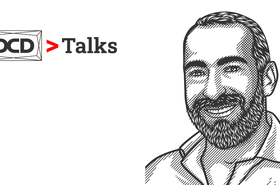The data center of today stands at a crossroads. Major cloud providers are in desperate need of more space and power to meet the growing demands of generative artificial intelligence (AI), at the same time as sustainability has become an uppermost concern for data center providers worldwide.
The figures bear out the situation. The number of hyperscale data centers worldwide is closing in on the 1,000 milestone, doubling since 2019. Meanwhile, over the next half-decade or so, the capacity offered by newly opened facilities is expected to double, while the power consumption of generative AI is estimated to be several times that of traditional workloads. In addition, regulations on storing data are creating a need for more localized facilities.
With capacity surging, efficiency is crucial given that such facilities are already estimated to consume two to three percent of energy produced worldwide. The question is how to fulfil these capacity needs while also providing sufficient space to supply it and giving back to the environment and society.
Densify, densify, densify
One of the means to do this is to build huge sites as densely as possible as technology and techniques advance. That way, it is possible to fit in the maximum amount of equipment while optimizing the efficiency of servers, making them properly prepared for handling higher AI workloads. Though no one has a crystal ball, part of this requires a certain ability to predict what lies ahead to make any newly built data center fully prepared for any ramp-ups in demand.
When density rises, however, the extra heat generated creates a challenge because it means additional cooling is required. Meeting that need can take the form of innovative liquid and immersive technologies. At Data4, we are harnessing liquid cooling at our Marcoussis site in the Paris region with European cloud provider OVHcloud and have plans to expand this method to all our campuses.
As we expand, this type of optimization is paramount when analyzing new sites and entering new markets. This is the case with the development of our new data center in the city of Hanau near Frankfurt, our first in Germany. With plans to invest €1 billion-plus to develop the 180MW facility on the 25-hectare site in stages until 2032, it will be one of the largest and most powerful data center campuses in Europe.
Data centers of such scale are comparatively more efficient than smaller ones, having sufficient space to allow for scaling up to meet accelerated demand and therefore helping future-proof investments to a degree. This is important considering that recent take-up of data center space has exceeded expectations, although our campuses are designed to cater for large-scale acceleration.
As capacity is absorbed, efforts to densify can enable further optimization of resources in future. That is the reason why, at Data4, we are constantly seeking to “densify, densify, densify”, a strategy that will help to make the most of the finite resources required for data center development, notably land and power.
Optimizing use of these scarce resources makes good financial sense for our customers, which can avoid the duplication of investment in core infrastructure that occurs when they reach capacity in a data-center location and must create a child site nearby. It also makes sense for the environment to squeeze as much capacity as possible from brownfield sites like our Hanau location to avoid further artificialization of greenfield sites in future.
Finding the right sites
When it comes to real estate, another oft-repeated mantra is “location, location, location”. That, again, is something of which data center and cloud providers need to be extremely mindful when making decisions on where to build facilities or acquire colocation space.
Particularly in the world’s data center hotspots – such as the FLAP-D markets of Frankfurt, London, Amsterdam, Paris, and Dublin – major constraints have now arisen when it comes to available space for adding more facilities. That means careful consideration is needed to locate new data centers.
In the case of a site like Hanau, that city provides an ideal, attractive location considering today’s increasingly limited space. Situated just 25 kilometers east of Frankfurt, it is still close to a hub of cloud activity and has major benefits for enabling rich connectivity and latency, yet at the same time has sufficient space to enable a large data-center build.
Furthermore, the data center is being built on the site of the Grossauheim barracks, a former US military base. As a brownfield location, its redevelopment provides an effective way of using otherwise derelict land and recycling materials from the demolition, thus giving the activity strong backing from the municipality and creating employment opportunities in the surrounding community.
Exploring green, community-centric options
As highlighted, sustainability now features as a consideration that simply must go hand-in-hand with new data-center builds. A whole raft of possibilities for cutting emissions are being explored, with innovation called for to get this right.
Reusing heat produced by data centers represents an excellent opportunity for data center operators and the communities in which they exist. Options for heat reuse include using captured CO2 emitted through heating to grow algae, recycling waste as biomass to develop new circular energy sources or reusing it to manufacture bioproducts for industries such as cosmetics and agriculture.
Innovative pathways to efficiency
Indeed, these are some of the options that Data4 is looking at in its newly announced R&D pilot project, in collaboration with the University of Paris-Saclay for creating the world’s first bio-circular data center in the Essonne region south of Paris. These ideas can then be extended to other data centers such as the one in Hanau.
Aside from that, many other initiatives are in the pipeline. The Hanau facility will operate using electricity that is 100 percent offset by renewable energies and will use low-carbon concrete, while Data4 will help preserve biodiversity through measures like a habitat for resettling lizards and a nesting tower for swifts.
Meanwhile, as well as leading to the need for increased capacity in data centers, AI itself presents multiple innovative pathways toward improving energy efficiency. It can, for instance, be used to analyze data on power consumption and cooling, helping to keep them at optimal levels and enabling parameters to be adjusted in real time.
By coming at these issues from multiple angles, there is big potential to improve power and water use effectiveness, slash the environmental footprint of data centers, and provide benefits to local communities.
The way ahead will not be simple or predictable, but getting those things right will provide the best opportunity for data center players and cloud providers alike to maximize their return on investment in the AI boom.
Follow Data4 on LinkedIn to find out more.
More from Data4
-

Data4 could use data center waste heat to grow algae
Project attempts to recreate natural photosynthesis method
-

Sponsored Innovation in data centers: Navigating challenges and embracing sustainability
Keeping pace with our ever-evolving digital landscape
-

Sponsored Data centers: A catalyst for a sustainable digital future and local prosperity
Data centers as a catalyst for change


